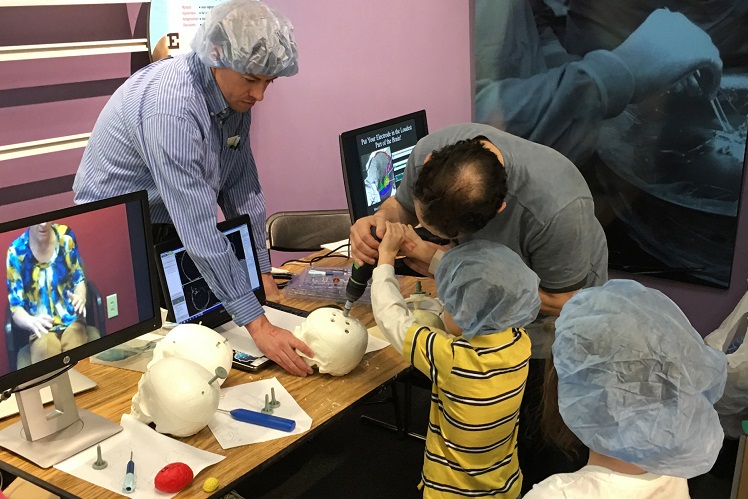
SfN Journals Lift the Curtain on Peer Review
For scientists who have not served on a journal’s editorial board or for early career researchers who have not yet reviewed a paper, “submitting a manuscript may seem like pushing it into a black box,” JNeurosci Editor-in-Chief Marina Picciotto wrote in a recent editorial.
Transparency in review, the theme of Peer Review Week 2017, is necessary to improve this imperfect “gold standard” of scientific publishing that usually happens out of sight of authors and with little direction to editors about how to prepare a fair and constructive review. As scientists are often not explicitly taught how to review a manuscript, they are left to learn from their personal experiences of being reviewed themselves. Indeed, some of the questions Picciotto and eNeuro Editor-in-Chief Christophe Bernard received in an open discussion about peer review focused on how to become a reviewer and critically evaluate a manuscript while providing authors with the information they need to make successful revisions.
SfN’s journals are addressing this educational gap through unique approaches to training the next generation of reviewers. Just this month, JNeurosci launched a new pilot Reviewer Mentoring Program that matches trainees with one of the journal’s associate editors. The trainee and editor will collaborate on a review of an article posted to the preprint server bioRxiv, with the option of posting the review as a comment on the bioRxiv article. The program serves the neuroscience community by providing the field with a source of trained reviewers and valuable feedback that authors of preprint articles can use to improve their manuscript before submitting it to a journal.
eNeuro is tackling this training challenge with a series of webinars on Neuronline, through which SfN members can practice reviewing published eNeuro papers and then compare their work with the actual review synthesis that was provided to the authors.
JNeurosci Demystifies the Review Process
In a new behind-the-scenes video, JNeurosci reaffirms its commitment to transparency by helping authors and the public understand how the editorial process ensures the research it publishes is original, well-conducted, and advances our understanding of the brain and nervous system. Picciotto explains in detail the handling of manuscripts submitted to JNeurosci, including the assignment of senior and reviewing editors, the selection process for external peer reviewers, and how their interactions culminate in a decision letter.
eNeuro Builds Confidence Through Transparency
A lack of transparency has degraded trust in peer review for many years, Bernard says, with conflicting reviews from anonymous reviewers leaving frustrated authors without clear direction of how to make their manuscript suitable for publication.
eNeuro is reversing this trend by providing authors with a clear decision and justification that presents the views of the editors and reviewers in a straightforward and unified format — a consensus that summarizes the merits and criticisms of the work. As a result, eNeuro has received few appeals to its decisions.
In early 2018 eNeuro will introduce a new article type called Registered Reports, joining 84 other journals that offer this two-stage format of peer review for evaluating research questions and methodology independent of results. The registered reports format aims to minimize publication bias by committing the journal to publish the results of the accepted study protocol and committing authors to adhere to it as they collect, analyze and interpret data. In addition to assessing the inherent strength of the proposed study, Registered Reports save authors time and money by pointing out methodological issues before they begin their experiments and improves the scientific record by providing the authors a venue to publish their findings, regardless of outcome.
Picciotto and Bernard recognize that improving peer review is an ongoing process of listening to the field, evaluating the author experience, and responding to scientists’ concerns with new approaches and initiatives. Share your thoughts with them on Twitter, @MarinaP63 and @eNeuroEiC.



















